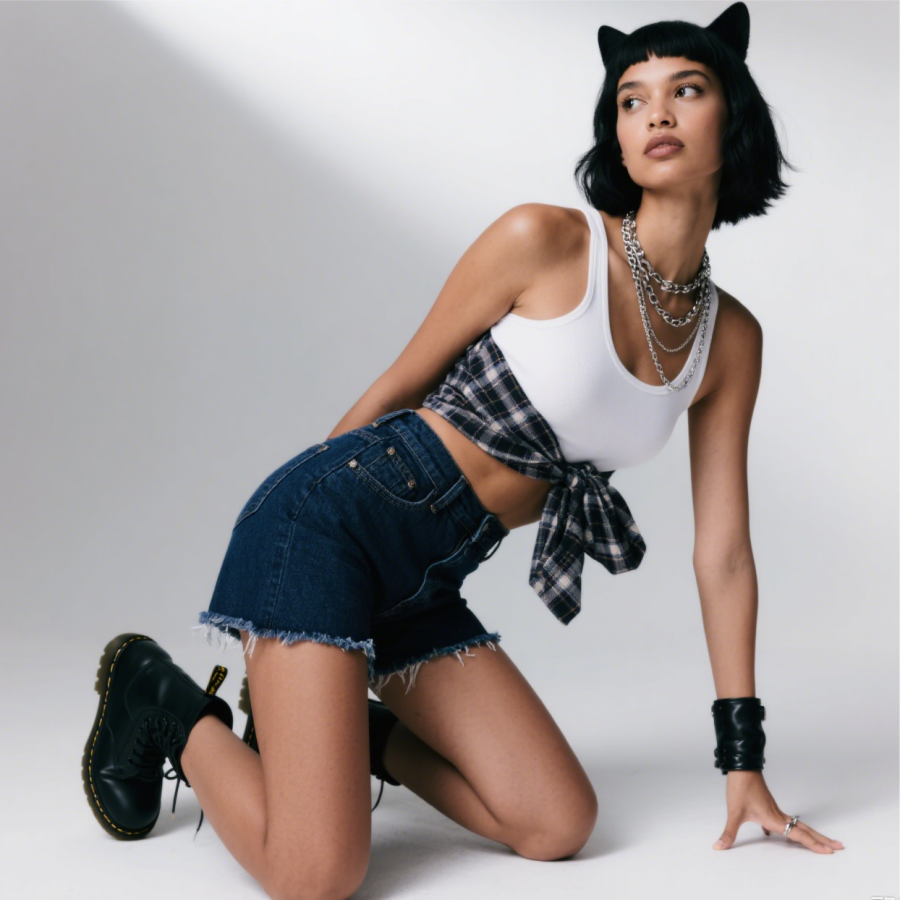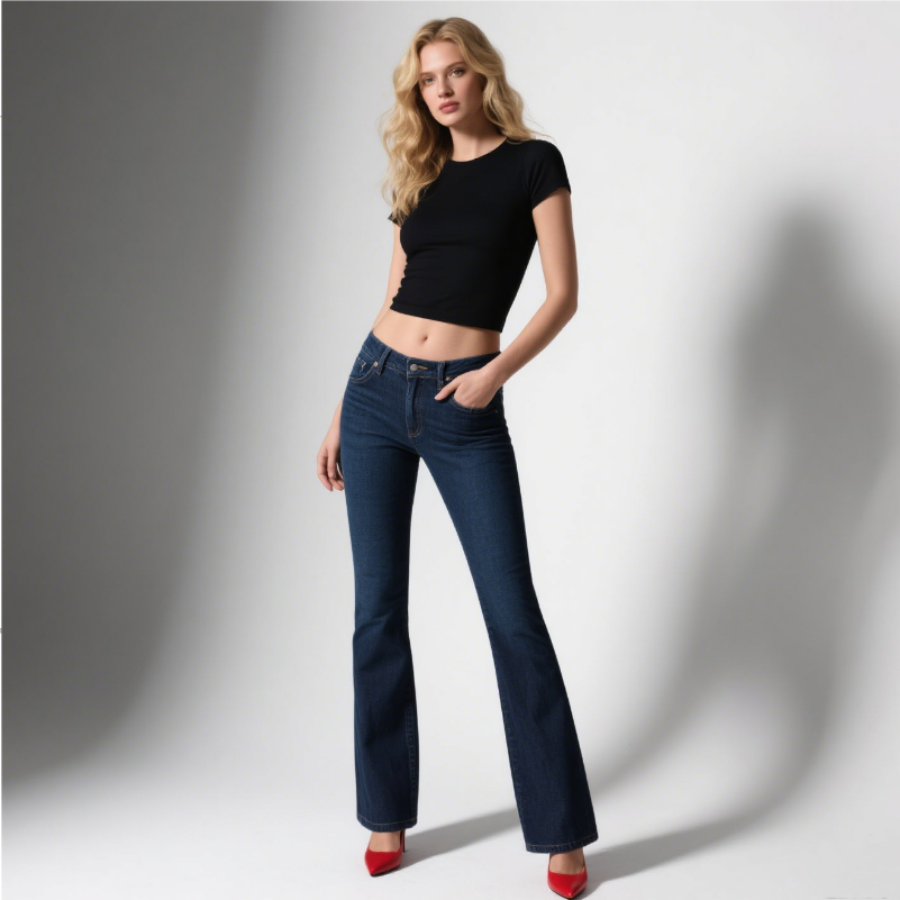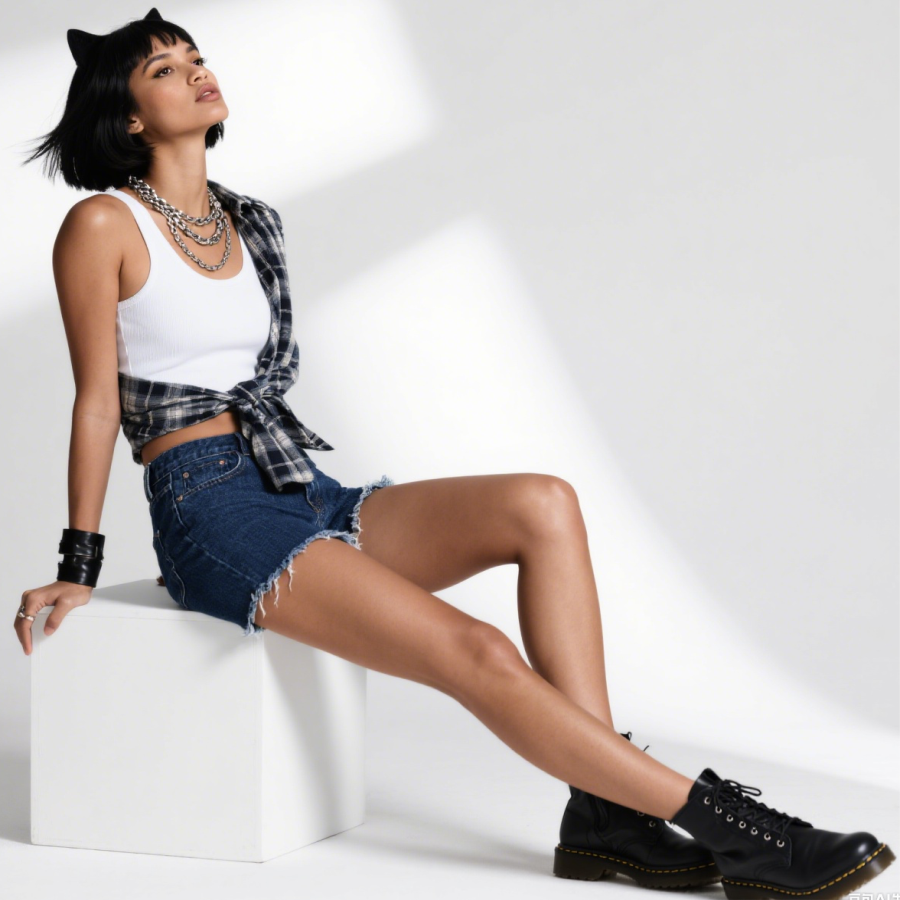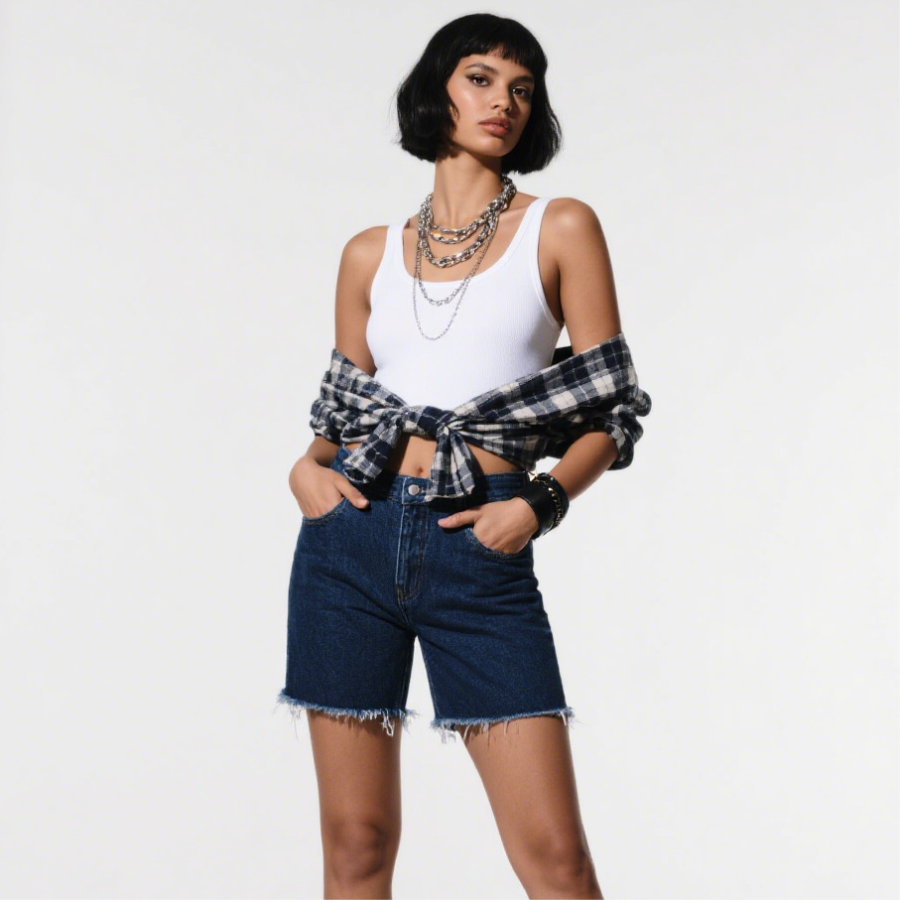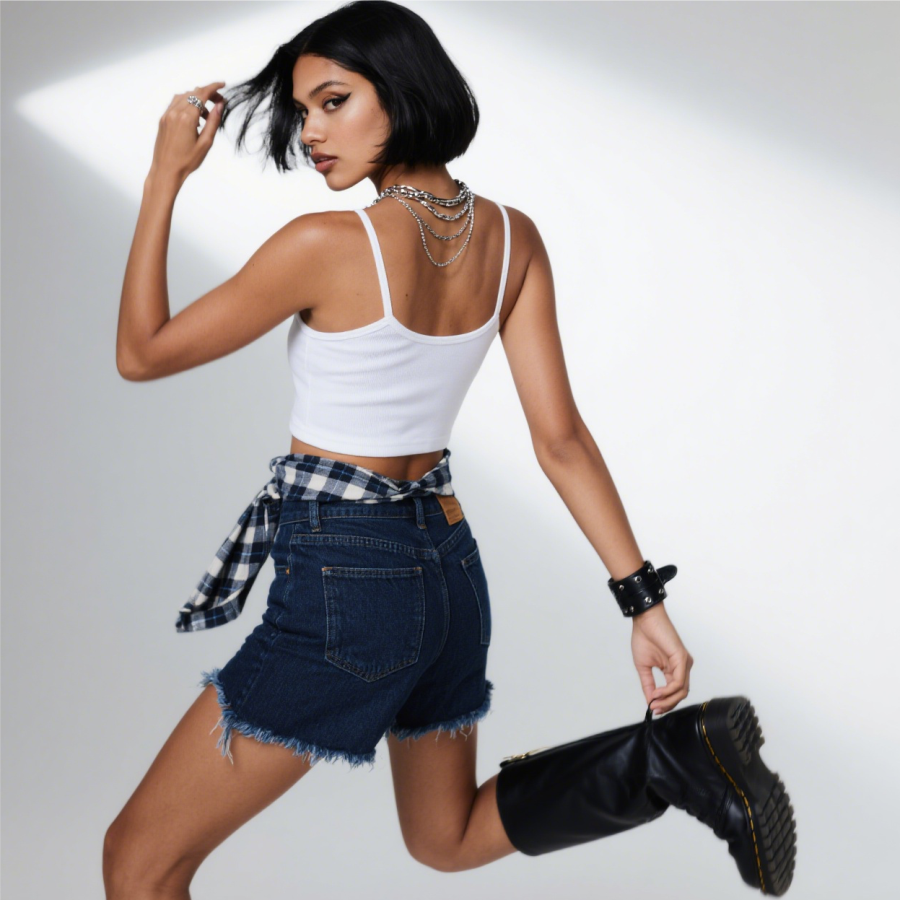Click to open expanded view
custom jeans
The steps for customizing jeans are summarized as follows:
1. Determine requirements: Communicate with the customization provider regarding style (straight leg, slim fit, etc.), details (pant length, pocket design, etc.), and intended use.
2. Select fabric and accessories: Choose denim fabric (thickness, color, etc.) and accessories (buttons, zippers, etc.).
3. Determine measurements: The customization provider or the customer measures key dimensions such as waist circumference, hip circumference, and pant length according to the guidelines.
4. Confirm the pattern and price: The customization provider provides the design drawings, and both parties confirm details such as cutting and sewing. A quote is provided based on the quantity.
5. Determine the manufacturing process: Cut and sew according to the pattern, and complete special processes such as washing and creating holes.
6. Sample adjustments: After trying on the sample, make modifications to areas that do not fit properly to ensure a proper fit.
7. Determine the quantity and delivery schedule: Confirm the quantity and delivery time.
Welcome global customers to place orders for customized jeans — Professional denim production base
No matter where you are in the world, we warmly welcome you to customize your own jeans! As a professional denim production base, we have a mature supply chain and extensive production experience, enabling us to provide flexible and high-quality customization services to global customers.
Our customization model is highly flexible. We can provide design customization services, where our professional design team will combine international trends with your specific needs to create unique denim styles. Alternatively, we can strictly follow the samples you provide, adhering to your quality requirements throughout the production process—from fabric selection, pattern control, to craftsmanship details—ensuring the final product aligns perfectly with your expectations.
Considering the varying needs of different clients, we have set a minimum order quantity of 100 pieces. Whether it's small-batch trial production for startup brands or regular restocking for established businesses, we can accommodate your needs.
In terms of quality control, we adhere to strict standards. For fabrics, from Xinjiang long-staple cotton blended denim to various imported premium fabrics, all undergo multiple inspections; In terms of craftsmanship, we utilize advanced production equipment and exquisite sewing techniques to ensure that each pair of jeans is well-made and durable.
We are familiar with international logistics processes and can provide convenient delivery services to global customers, eliminating concerns about cross-border transportation.
We welcome global customers to place orders and inquire at any time. We will meet your denim customization needs with professional service, reliable quality, and flexible cooperation models, and work with you to expand the market!

The process of customizing jeans involves several key steps, each of which directly affects the fit, style, and quality of the final product. The following is a detailed analysis of the process elements:
1. Preliminary Communication and Requirement Confirmation
This is the foundational step in customization, requiring a clear understanding of your needs. First, it is essential to define the intended wearing scenario—whether it is for daily commuting, street fashion, or vintage styling. Different scenarios have distinct requirements for the fit, comfort, and distressed style of the jeans. Second, it is important to understand the user's style preferences, such as whether they prefer washed-out, faded designs, ripped details, or a minimalist solid-color option. Additionally, clarify any special requirements, such as hidden pockets, extended hem lengths for layering, or specific material preferences for metal buttons (e.g., brass or antique silver).
2. Precise Body Measurement
Dimensions: Body measurement data is the core guarantee of custom fit, and must include basic dimensions and detailed data. Basic dimensions include waist circumference, hip circumference, thigh circumference, calf circumference, pant length (from waist to ankle or desired length), and crotch depth (front crotch/back crotch); Detailed measurements should focus on waist-to-abdomen curvature (for protruding or flat abdominal shapes), knee position (vertical distance from waist to knee), and ankle circumference (determining the degree of pant leg taper). Professional measurements also consider the user's body posture characteristics, such as whether they have O-shaped legs or anterior pelvic tilt, and adjust the pattern based on these data to balance the visual effect. Clearly define the size you require.
3. Pattern Design and Detail Finalization
The pattern is the foundation of jeans, requiring consideration of body type and style. Common patterns include slim-fit (Skinny), straight-leg (Straight), bootcut (Bootcut), and wide-leg (Wide Leg), among others. During customization, adjustments can be made to the waistband style (high-waisted/mid-waisted/low-waisted), hem shape (tapered/straight/slightly flared). Detail design includes pocket styles (slanted pockets, patch pockets, 3D pockets), stitching techniques (stitch color and thickness, such as contrasting stitching for visual impact), hardware accessories (zipper/button brand, custom text or patterns on leather labels), and back waist design (whether to add an elastic band, number of belt loops).
4. Fabric and Craftsmanship Selection
The fabric determines the texture and wearing experience of jeans. In terms of fabric material, traditional denim is primarily made of cotton, with 1%-3% spandex added to enhance elasticity (suitable for slim-fit styles), or non-stretch heavyweight cotton can be chosen (suitable for vintage, stiff styles); Weight ranges from 8 ounces (lightweight summer styles) to 16 ounces (heavyweight winter styles), with heavier fabrics more prone to forming unique wear patterns (cat whiskers, honeycomb texture). **Washing techniques** are key to defining the style, including raw unwashed (requires breaking in), light blue wash, distressed and worn, vintage stone-washed, etc. Specifications for cat whisker placement and honeycomb texture intensity can also be customized.
5. Manufacturing and Quality Control
Custom manufacturing typically involves cutting, sewing, washing, and finishing. Cutting requires adjusting the pattern based on body measurements to ensure precise dimensions for each part; sewing uses techniques such as edge-locking and double-needle stitching, with reinforcement at critical areas (such as the crotch and pocket edges) to prevent tearing during wear; The washing process must strictly adhere to design specifications for time and additives to ensure consistent color and distressed effects; post-production inspections must verify dimensional accuracy, loose threads, and hardware integrity to ensure compliance with customization standards.
6. Sample Fitting and Adjustments
For high-end customization services, the fitting process is indispensable. After users try on the semi-finished product (such as a sample garment with only the main sections sewn together), they provide feedback on areas that do not fit properly (such as a waist that is too loose, thighs that are too tight, or pants that are too short). The tailor then modifies the pattern based on the feedback and proceeds with a second production run until the desired fit is achieved. This step is particularly suitable for users with unique body types or those with extremely high standards for fit.
7. Delivery and After-Sales Service
When delivering the jeans, provide care instructions, such as rinsing raw denim in cold water with salt to set the color and avoiding frequent washing to preserve the worn look.

